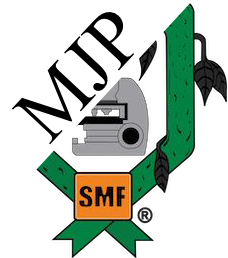-
Or Copy link


Article filters
Search Papers
Uniformity in shoot development in avocado grafts and its importance in establishing levels of indirect resistance to Phytophthora cinnamomi
By Yeison David López Galé*, Mauricio Fernando Martínez, Lizeth Paola Palacios Joya, Nubia Murcia Riaño, Mario Augusto García Dávila
* Corresponding Author. Email: ylopezg@agrosavia.co / Institution: Corporación Colombiana de Investigación Agropecuaria - AGROSAVIA
Received: 22/November/2023 – Published: 08/August/2024 – DOI: https://doi.org/10.18781/R.MEX.FIT.2311-1
-
Or Copy link
Abstract Background/Objective. The level of resistance to Phytophthora cinnamomi in avocado germplasm can be evaluated indirectly through inoculation of the pathogen by wounding the stem. The objective of this work was to compare the conventional graft development method and the etiolated graft method to determine levels of indirect resistance to P. cinnamomi through the stem wound inoculation technique.
Materials and Methods. In the study, three isolates of P. cinnamomi and two avocado genotypes with different levels of resistance to the pathogen were used, Duke-7 (medium resistant) and Hass (susceptible). Clonal multiplication of the genotypes was carried out with buds grafted on rootstocks propagated by Antillean avocado seeds. Inoculation was performed on the shoot at a height of 8 cm and the growth of the lesions was measured for 24 days. With the data, the Area Under the Disease Progress Curve (AUDPC) and the Coefficients Variation (CV) are calculated. The information was analyzed with a completely randomized experimental design with a 2*2*3 factorial arrangement (Method*Genotype*Isolation).
Results. The analysis of variance for the AUDPC showed no differences between methods (p=0.1881); However, there were differences between genotypes, isolates and between the genotype*method and genotype*isolation interactions (p≤0.05). With the conventional method, the development of the outbreaks was late (141-159 days) and the size of the lesions was highly variable (CV=38.9-64.4%), being able to discriminate partial degrees of aggressiveness between isolates, but not levels of resistance between genotypes. The etiolated and greened shoots in the nursery, on the contrary, presented rapid growth (101-107 days) and greater uniformity in the lesions generated by the pathogen (CV=11.1-24.2%).
Conclusion. The development of etiolated shoots in avocado grafts is proposed as a rapid alternative method that can guarantee greater uniformity in the development of lesions within the experimental units of a treatment, thus achieving greater reliability when evaluating and selecting preliminarily. avocado genotypes with indirect resistance attributes to P. cinnamomi.
Keywords: Persea americana, etiolation, virulence, genetic improvement